
Sweet Bonanza
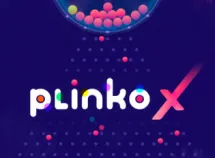
PlinkoX

Hotline

Aero
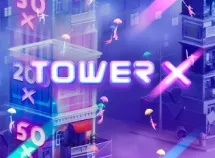
TowerX
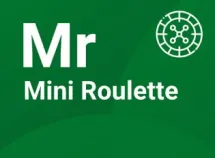
Mini Roulette

The Dog House - Dog or Alive

Beheaded
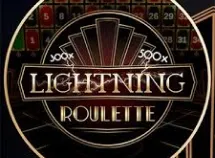
Lightning Roulette
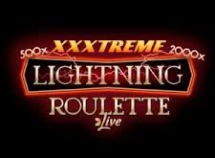
XXXtreme Lightning Roulette

Russian Roulette

Ultimate Roulette

Gold Vault Roulette

Mega Roulette

Vegas Roulette

Caribbean Stud Poker
 Table of content
Table of contentLooking for an exceptional online gambling experience? 1win India stands out as the premier destination for casino games and sports betting enthusiasts. This comprehensive guide explores everything you need to know about the 1win official website - from registration and bonuses to game selection and payment methods. With over 11,000 games, attractive promotions, and a user-friendly interface, 1win has established itself as a top choice for Indian players since 2016. Read on to discover why 1win deserves its impressive 4.7/5 rating and how you can maximize your gaming experience on this trusted platform.
In the crowded online betting market, 1win has successfully carved out a significant space for itself through its comprehensive offerings and user-centric approach. The 1win bookmaker provides a perfect blend of sports betting and casino games on a single platform, creating a versatile gaming environment for all types of players.
What truly distinguishes 1win is its exceptional user experience. The platform features a modern, intuitive interface that makes navigation seamless for both beginners and experienced players. With over 11,000 games and counting, 1win continuously expands its offerings to keep the experience fresh and exciting. The platform operates under a Curacao license, ensuring all activities are legal and regulated, which gives players peace of mind while enjoying their favorite games.
1win India specifically caters to the Indian market with localized payment methods including UPI, PAYTM, and bank transfers, along with games that appeal to Indian players. The platform allows you to bet on cricket, kabaddi, and other sports popular in the region, while the casino section features numerous slot games and live dealer options that create an immersive gaming experience.

Getting started with 1win is quick and straightforward. The complete instructions to 1win India sign-up process is designed to be user-friendly and accessible to everyone. To create an account on the 1win official website, follow these simple steps:
Visit the official 1win website - Open the homepage and locate the registration button in the top corner
Choose your registration method - Select between social network registration or manual registration
Fill in your details - For manual registration, enter your email address and phone number
Create a strong password - Set a secure password that meets the platform's requirements
Select your preferred currency - Choose INR or another available currency for your account
Enter a promo code (optional) - Input a valid promo code to enhance your initial bonus
Accept the terms and conditions - Check the box to agree to the platform's terms of use
Complete verification - Confirm your registration via email or SMS
Perform your first 1win login - Use your credentials to access your new account
Make your first deposit - Fund your account to start playing games or placing bets
During registration on the site, you have the opportunity to enter a promo code that can enhance your initial bonus. Once you complete the registration process and agree to the terms and conditions, you'll receive a confirmation email or SMS. After confirming your account, you can immediately perform your 1win login and start exploring the platform. The entire process takes just a few minutes, making it convenient for users eager to start their betting journey.

New players at 1win are greeted with an exceptionally generous welcome bonus that significantly boosts their initial deposits. The special welcome bonus for new 1win India registrants is one of the most attractive in the online casino industry, offering up to 500% bonus on the first four deposits.
To receive a welcome bonus, you need to register and make a qualifying deposit. The bonus is credited to your bonus account and comes with specific wagering requirements. When you make your first deposit, 1win offers this impressive bonus that gives new players a significant advantage when they start betting or playing casino games on the platform.
According to the platform's information, new 1win users can receive up to ₹38,550 on a single deposit or across four deposits. It's important to note that you can use the 1win promo code during registration to potentially enhance your welcome offer. The bonus money transfers to the main account when losses occur on slots, giving you more opportunities to win without risking additional funds.
A promo code is one of the most valuable tools for maximizing your experience on 1win. Using this code allows you to unlock special promotions that might not be available to regular users. The 1win promo code can be used during the registration process or when making deposits, depending on the specific promotion.
To activate the promo code, you need to enter it in the appropriate line during registration and confirm the creation of your account. If you can't activate the promo code, make sure it's up to date. Look for a unique set of numbers or letters on thematic forums, social networks, or the official website to find valid codes.
The code allows you to receive additional bonuses, free bets, or other promotional offers. 1win regularly updates its promotion catalog, so it's worth checking their official website for the latest promo codes. Remember that each code comes with specific terms and conditions, including wagering requirements that must be met before you can withdraw any winnings derived from the bonus.
1win offers a wide range of secure and convenient payment options for deposits and withdrawals to accommodate users from different regions. To deposit in 1win, you can use various options that are popular in India, making transactions smooth and hassle-free.
The easy ways of payments for fast 1win deposits include:
PAYTM
UPI
Bank transfer
Phonepe
Bitcoin
Each payment method has its own processing time and limits. E-wallets typically offer the fastest transactions, with funds appearing in your 1win account almost instantly. The minimum deposit is 300 INR, which is kept reasonably low to allow casual players to join the platform without a significant financial commitment.
For withdrawals, you can choose from options like IMPS (banks), Perfect Money, or AstroPay. Standard withdrawal takes from a few minutes to 48 hours, depending on the payment system you choose. The payment method you select also affects how quickly you can withdraw funds from 1win, so it's important to select an option that works for both deposits and withdrawals.
In today's fast-paced world, mobile accessibility is crucial for any online platform. The 1win mobile app allows you to enjoy seamless gaming and betting whenever you want, providing all the features available on the desktop version in a user-friendly mobile interface.
It's important to note that the 1win app is currently available only for Android devices. To download the 1win app, Android users can visit the official website and follow the instructions to install the APK file. The app download process is straightforward, but you'll need to enable installation from unknown sources in your device settings. Make sure you have enough free space on your phone or tablet and a good internet connection to speed up the download process.
iOS users can access 1win through the mobile version of the site, which has been optimized for Apple devices. The mobile website offers nearly identical functionality to the Android app, ensuring that iPhone and iPad users don't miss out on any essential features. The user-friendly interface ensures a smooth 1win experience with a concise design that's both modern and intuitive regardless of which platform you use. You'll be able to quickly find the right sections or perform other necessary actions. The app automatically adapts to your Android device, while the mobile site adjusts perfectly to any iOS screen size, ensuring the best possible experience. In addition to gambling, you can visit the betting section, receive notifications about promotions, and manage your account - all from your mobile device.

The casino section at 1win is extensive, featuring over 11,000 games to suit different preferences. You can play casino games from top providers like Spribe, Microgaming, and Spinomenal, ensuring high-quality graphics and fair gameplay.
The best online slots to play at 1win Casino India include cult games that maintain their popularity over time, such as Starburst, Gonzo's Quest, and Bonanza Megaways. Some slots can be tried without a 1win login through demo versions, allowing you to test features and interfaces before playing with real money.
It's impossible to list all 1win games given their massive catalog of over 11,000 titles. Here are the top games you should definitely try when looking for big wins:
|
Game Title |
Genre |
Why Play? |
|
Lucky Jet |
Crash game |
Dynamic but short rounds with transparent statistics and simple rules. Perfect for beginners and experienced players alike. |
|
Book of Tribes |
Slot |
Interesting antique theme with large payouts and generous bonus opportunities. Captivating gameplay that keeps you engaged. |
|
Nero's Fortune |
Slot |
High volatility game where you can use free spins to secure significant winnings. Excellent for thrill-seekers. |
|
Andar Bahar |
Card game |
Exciting live game with online chat and special bet options. Watch the croupier in action and communicate with other players. |
|
Money Train 2 |
Slot |
Features 40 active lines for winning combinations with interesting features including autoplay, Wild, and Scatter symbols. |
|
Aviator |
Crash game |
High RTP of 97% with simple gameplay and unpredictable patterns. One of the most popular games at 1win. |
Beyond slots, 1win offers an exciting live casino experience. Feel energized with 1win live casino games where you can play in real-time with professional dealers. Popular options include Andar Bahar, based on the traditional Indian card game, as well as blackjack, roulette, and other table games.
For adrenaline seekers, high stakes in 1win crash games like Aviator and Lucky Jet provide thrilling experiences. In Aviator, you watch a red airplane fly with unpredictable patterns, requiring you to cash out at the right time to secure your winnings. With simple rules and a high RTP of 97%, it's no wonder Aviator is at the forefront of the most popular rankings.
Sports betting is a major component of the 1win platform, making it your go-to platform for online wagers. The 1win bet options cover a wide range of sports, including cricket, football, tennis, basketball, and many others. You can bet on major international tournaments as well as local leagues with over 1,000 sporting events available.
The betting market on 1win includes pre-match betting and live betting, where you can place wagers as the action unfolds. The platform offers competitive odds that maximize your potential returns. In addition to soccer, bettors often choose tennis tournaments such as the ATP Tour, WTA Tour, and Grand Slams. Basketball betting is also popular, including the NBA, ACB League, and Euroleague.
To place a bet, you need to navigate to the sports section, select your preferred event, and choose a betting market. 1win provides detailed statistics and live updates to help inform your betting decisions. Whether you're looking to bet on sports outcomes, player performances, or specialized markets, 1win offers comprehensive options for both casual bettors and serious punters.
A common concern among potential users is the legality and safety of online betting platforms. When it comes to the question "Is 1win legit in India?", the answer is yes. The platform operates under a Curacao license obtained by its owner, NextGen Development Labs Ltd, ensuring all activities are legal and regulated.
The 1win website employs advanced security measures, including SSL protocols, to protect user data and financial transactions. All personal data is processed according to predetermined rules, and players agree to the use of cookies for data analysis and platform improvement. The platform has been active in the Indian market since 2016, adhering to local regulations and laws with the help of professional legal teams.
1win also promotes responsible gambling by offering tools to set deposit limits and self-exclusion options. The platform maintains a high 4.8/5 safety and regulation rating, reflecting its commitment to user protection. Overall, 1win provides a secure environment where players can enjoy their favorite games with peace of mind.
Customer support is a crucial aspect of any online platform, especially when financial transactions are involved. The comprehensive guide to 1win customer team highlights multiple contact methods available to users seeking assistance.
1win provides three main channels for customer assistance:
Live chat on the website or mobile application (fastest response)
Email support
Phone support (in English)
The support service is available 24/7, ensuring that users can get help regardless of their time zone. The online chat feature is particularly useful for immediate assistance with urgent issues. Support agents are knowledgeable about the platform's features and can provide guidance on registration, deposits, withdrawals, and bonus terms.
If you encounter any difficulties, there's no need to worry. The platform has been operating for many years and has adapted to the different needs of users. Simply formulate your question clearly to speed up the communication process, allowing the manager to quickly understand your problem and offer effective solutions.
Withdrawing your winnings from 1win is a straightforward process. The fast 1win withdrawals using e-wallet payment options are particularly popular among users seeking quick access to their funds.
To withdraw funds from 1win, follow these steps:
Navigate to the cashier section and select the withdrawal option
Choose your preferred payment method (IMPS, Perfect Money, or AstroPay)
Specify the amount you wish to withdraw
Confirm the transaction details
Withdrawal requests are typically processed within 24 hours, although the actual time it takes for the funds to reach your account depends on the payment method chosen. E-wallets generally offer the fastest withdrawals, while bank transfers may take several business days.
It's important to note that withdrawals are available to all verified users. Before confirming the transaction, be sure to double-check that all details have been entered correctly. This will speed up the process of withdrawal and avoid possible problems and delays. Remember to follow the safety rules that users need to adhere to for smooth transactions.
Yes, 1win operates legally under a Curacao license held by NextGen Development Labs Ltd. The platform employs advanced SSL security protocols to protect user data and financial transactions, ensuring a safe gaming environment for all Indian players since 2016. To claim the 1win welcome bonus of up to 500%, register an account, make your first deposit (minimum 300 INR), and the bonus will be automatically credited to your bonus account. This bonus applies to your first four deposits, potentially giving you up to ₹38,550 in bonus funds. Games like Aviator and Lucky Jet offer high RTP (Return to Player) rates of up to 97%, giving players better winning chances. For slots, Book of Tribes and Money Train 2 are popular choices with generous bonus features. 1win offers several India-friendly payment options including PAYTM, UPI, bank transfers, Phonepe, and AstroPay. For withdrawals, you can use options like IMPS (banks), Perfect Money, or AstroPay, with processing times ranging from minutes to 48 hours depending on the method. Yes, Android users can download the dedicated 1win mobile app from the official website. iOS users can access the fully optimized mobile version of the site through their browsers. 🌏 Is 1win legal and safe for Indian players?
🎁How can I claim the 1win welcome bonus?
🎲Which 1win games offer the highest chance of winning?
💳What payment methods are available for Indian players on 1win?
📱Can I play 1win games on my mobile device?